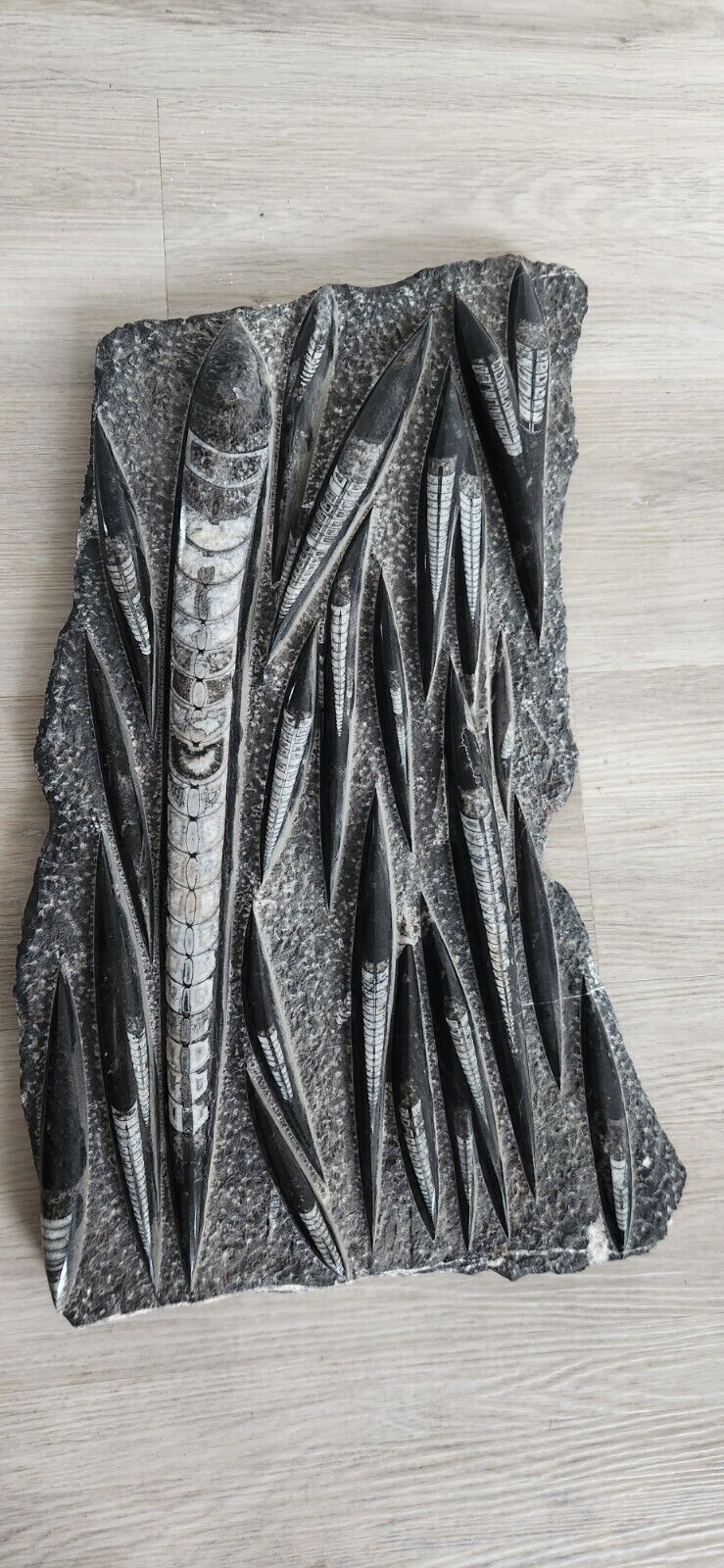-40%
Neolithic Point / Tenerian Culture...This is a simple but very nicely crafted
$ 256.08
- Description
- Size Guide
Description
DimensionsHeight: 5 Inches; Width: 1 5/8 Inches; Depth: 1/4 Inches
Description
This is a simple but very nicely crafted Tenerian point, with excellent serrations and tip. The coloration is a warm brown tone, with underlying swirls of dark grey. The piece seems to have been carved so that it could not only have been attached to be used as a spear, but held in its owner's hand, as well.
We stand by the provenance of all our material and can provide a letter of authenticity upon request.
Measurements: Height in stand: ~ 5".
Actual tool:~ 3-7/8" long x 1-5/8" wide x 1/4" thick
Location: Tenerean Culture / Niger, Africa
Time Period: Neolithic ~ 5200 - 2500 BC
Type of Stone: Flintstone
More Information:
The Neolithic (Neo=new; Lithic=stone) era is also called the New Stone age, which began around 10,000 BC and ended between 4,500 and 2,000 BC. The Neolithic era varies in time span depending on geographic location. The Paleolithic era, which originates in the beginning of human life, continued until the Neolithic revolution. Where as Paleolithic humans lived a nomadic lifestyle in small groups consisting of twenty to thirty people; Neolithic humans farmed in permanent settlements and raised/herded animals; agriculture was discovered and became a major source of food. The concept of private property and ownership emerged for things such as land, livestock and tools. Neolithic people were shorter and had lower life expectancy, Diseases like tooth cavities and typhoid emerged in the new stone age. Neolithic women had more children because the lifestyle was no longer nomadic. Stone tools were the norm, but began to be more sophisticated, specialized, and were often polished to a fine finish. Rocks with a high percentage of silicium dioxide (SiO2) were best suited for tools, as a sharp blow causes pieces to "flake" off, leaving sharp edges. Polished stone tools were made sharper by grinding the tool with another coarse abrasive rock to remove the chip scars either from the entire surface of around the working edges. At times the tools were also “polished”: a final grinding with a fine abrasive. Scientists consider the creation of all these tools a sign of early human ingenuity.
The Tenerian or "Tenerian" culture existed between the 5th and 3rd millennium in Africa's Sahara Desert, when the area was wetter and more habitable for humans. This culture specialized in not only cattle herding, but were excellent hunters and fishermen. Bioarchaeologists have determined from remains that Tenerians were short, with extremely muscular legs, indicating they had a strenuous lifestyle fueled by an abundance of protein. At the time there lakes and rivers in the region, allowing them plenty of nourishment. Discoveries of buried remains indicate the Tenerians observed rituals as they were buried with a variety of different artifacts.











